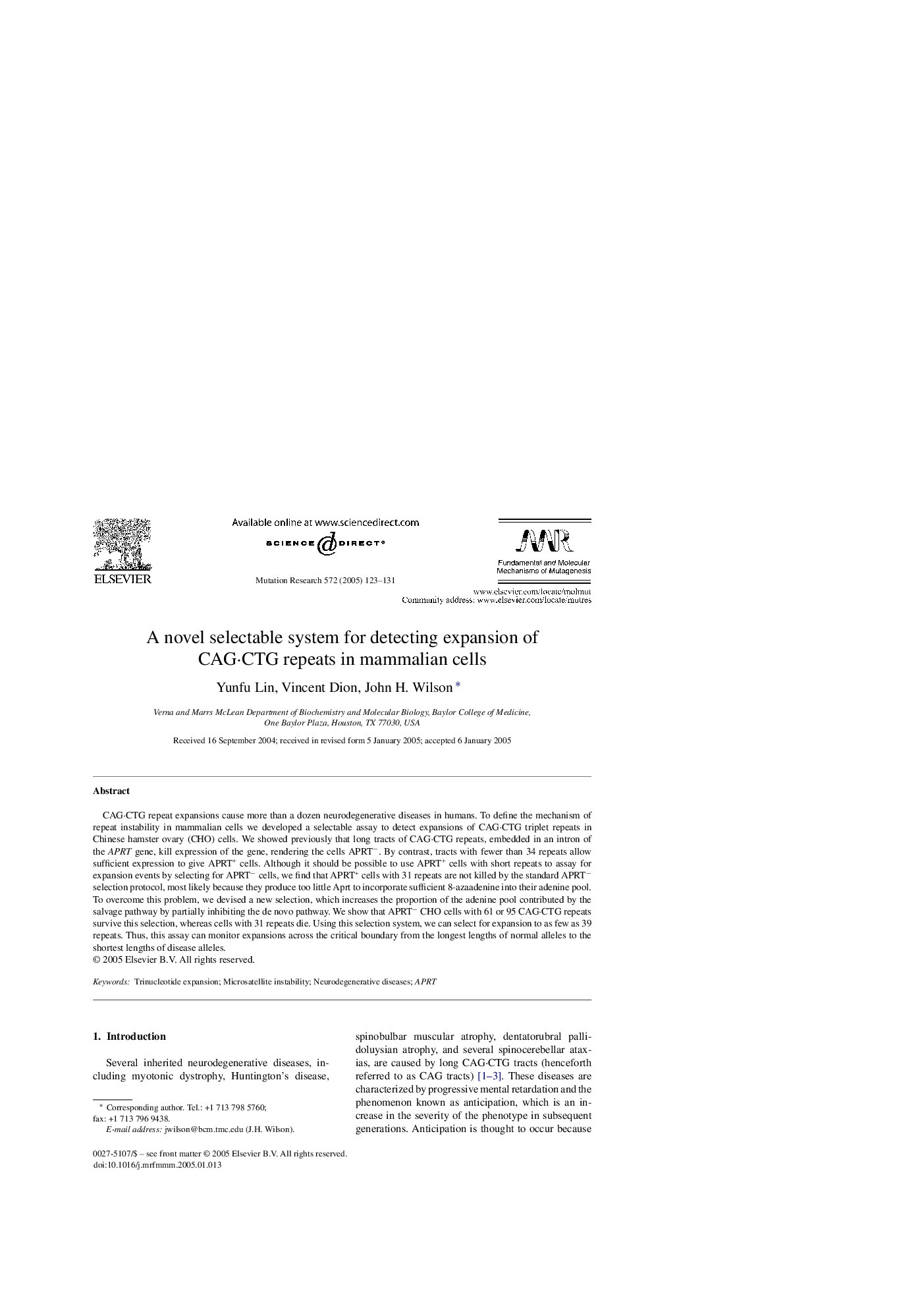| Article ID | Journal | Published Year | Pages | File Type |
|---|---|---|---|---|
| 9909138 | Mutation Research/Fundamental and Molecular Mechanisms of Mutagenesis | 2005 | 9 Pages |
Abstract
CAG·CTG repeat expansions cause more than a dozen neurodegenerative diseases in humans. To define the mechanism of repeat instability in mammalian cells we developed a selectable assay to detect expansions of CAG·CTG triplet repeats in Chinese hamster ovary (CHO) cells. We showed previously that long tracts of CAG·CTG repeats, embedded in an intron of the APRT gene, kill expression of the gene, rendering the cells APRTâ. By contrast, tracts with fewer than 34 repeats allow sufficient expression to give APRT+ cells. Although it should be possible to use APRT+ cells with short repeats to assay for expansion events by selecting for APRTâ cells, we find that APRT+ cells with 31 repeats are not killed by the standard APRTâ selection protocol, most likely because they produce too little Aprt to incorporate sufficient 8-azaadenine into their adenine pool. To overcome this problem, we devised a new selection, which increases the proportion of the adenine pool contributed by the salvage pathway by partially inhibiting the de novo pathway. We show that APRTâ CHO cells with 61 or 95 CAG·CTG repeats survive this selection, whereas cells with 31 repeats die. Using this selection system, we can select for expansion to as few as 39 repeats. Thus, this assay can monitor expansions across the critical boundary from the longest lengths of normal alleles to the shortest lengths of disease alleles.
Related Topics
Life Sciences
Biochemistry, Genetics and Molecular Biology
Cancer Research
Authors
Yunfu Lin, Vincent Dion, John H. Wilson,
